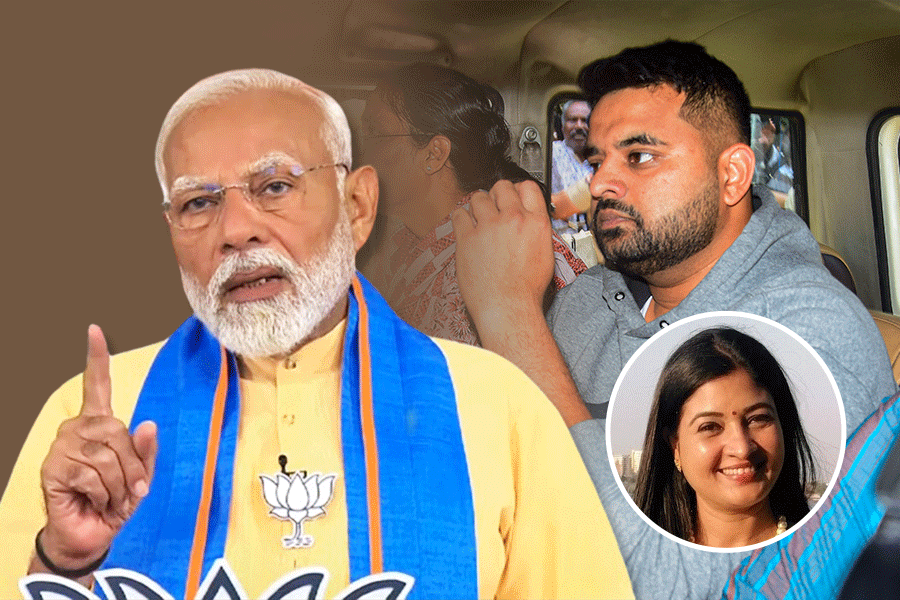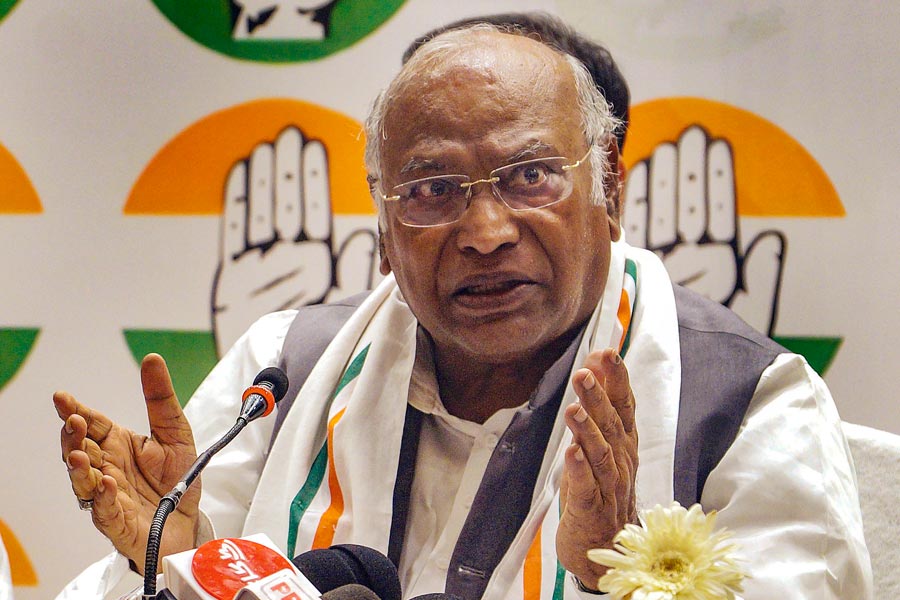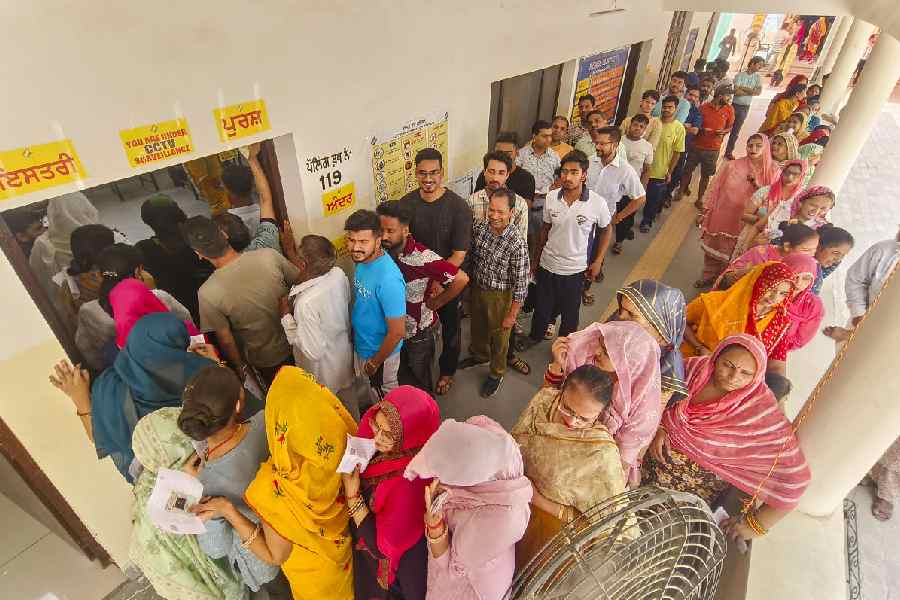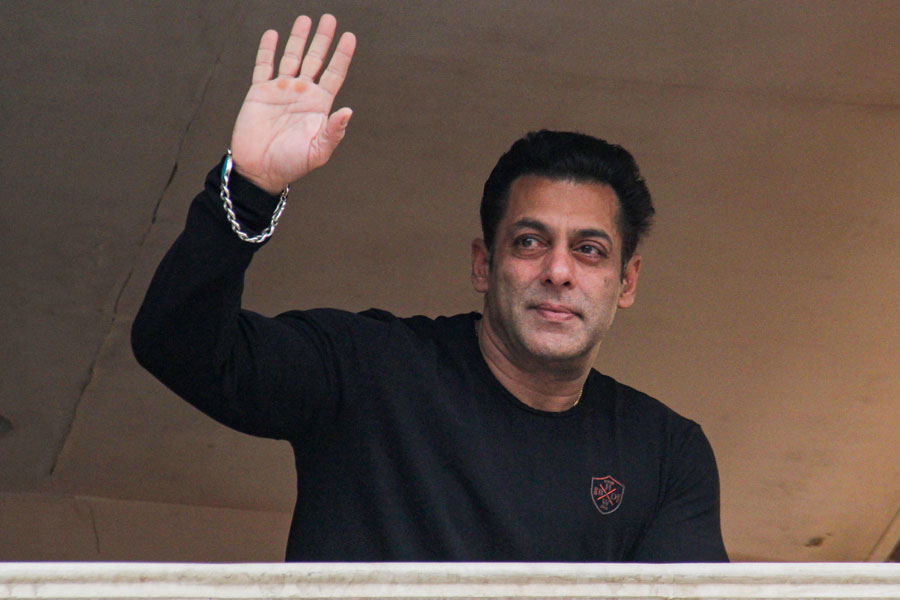Some say it’s the South China Sea that softly pounds the sands at Desaru on Malaysia’s southeastern coast, others claim the surf is of the Indo-Pacific Ocean stretching away to the distant Americas. What is indisputable is that like Katchatheevu, Arunachal Pradesh, Ladakh and other contested territories, this vastness is also Greater India. Clement Attlee’s Labour government in Britain instructed Sir Stafford Cripps and the Cabinet Mission to make it clear to India’s new leaders in 1946 that they would have to defend the “South-east Asia area” after Independence.
The rationale was that if Rajendra Chola could brave the seas in the 11th century to sack the Sri Vijaya kingdom and conquer the Malayan peninsula, some ambitious South-east Asian potentate, or an outside power with a foothold in the region, could repeat the adventure in reverse. Indeed, this was no mere fancy amidst the tingling excitements of 1942 when Subhas Chandra Bose and his Indian National Army threatened to prove the academics and strategists right. Switch to modern times and some might argue that the 15 North American, British and Australian cities that mourned Arvind Kejriwal’s humiliation must also be part of a virtual global entity. India doesn’t lead the world only in exporting cow dung to the United States of America, Singapore and Maldives. It is also the foremost exporter of manpower. An annual average of between 120,000 and 140,000 people, peaking to a record 225,620 in 2022, would not have renounced their citizenship if Narendra Modi’s National Democratic Alliance government with its boast of capturing 400-plus seats had been able to create enough jobs at home.
The agreement on “facilitation of temporary employment of Indian workers” in construction and home-based caregiving that New Delhi and Tel Aviv signed on November 3, 2023 and the recent report of the first batch of more than 60 construction workers leaving India to replace Gazans whose work permits Israel has cancelled suggest that today’s India is no more mindful of lives than the British raj under which 147,000 Indians were slaughtered in two world wars. Marx and Engels might inspire the NDA’s slogan, ‘Coolies of the world, unite! You have nothing to lose but your lives!’
Needing India’s markets, climate change activism, and potential role in countering China, the West is deferential to Modi when Katchatheevu is dragged out of oblivion to distract attention from Ladakh. Since less than 2% of Ladakh’s border incidents receive media coverage, it’s not possible to test Modi’s “no intrusion” and “no territorial loss” claims that Amit Shah robustly endorses. But according to local functionaries and American sources, there have been skirmishes and encroachments all along the line of actual control in Ladakh since the Sino-Indian encounters of May 5, 2020. As for Arunachal Pradesh, tit for tat being the name of the game, India can upstage China with an altogether new name (in Sanskrit perhaps, or even Tamil) that no Chinese ever recognises as the Middle Kingdom.
Modi can claim credit for many things but some achievements that obsequious devotees and sycophantic television anchors salivate over are either illusory or were already in the works when he took office. Elation over surpassing Britain’s GDP, for instance, overlooks per capita figures that stress an Indian’s much lower productivity. A quarter of India’s population would not otherwise have languished below the official poverty threshold of Rs 32 per day while billionaires sprout from the soil of Bharat Mata. Nor would the World Food Programme have reckoned that 21.25% of Indians live on less than a daily $1.90 and that India is home to a quarter of the world’s undernourished people. The coming election is unlikely to narrow the gap between India’s $3.47 trillion GDP and China’s $17.97 trillion, but we can be certain that the “trailer” of which Modi speaks will herald giant strides towards the goal of Hindutva which, as the Supreme Court ruled on December 11, 1995, is a “way of life and not a religion.” That indicates more temples and invocations of Ram, more subordination of science and pragmatism to ritual and superstition, and more of the faithful packed into influential jobs that can shape the future — Patanjali Ayurveda labels instead of familiar allopathic cures.
Yet, it is not difficult to understand why so many of one’s friends and acquaintances have become fervent Modi champions. To take a slogan from the repertoire of a woman he might publicly castigate but possibly secretly admires (although I have no evidence of the latter), his rhetoric resonates with all the signals of a government that works, not John Kenneth Galbraith’s “functioning anarchy”. No publicity machine could be as compelling as when he addresses what are widely recognised as primary middle-class concerns (housing for instance). Information technology, emblem of modernity, symbol of all our aspirations and answer to all mankind’s woes, is passionately worshipped. It’s refreshing amidst this churning to note the hint of old-fashioned social envy in Nirmala Sitharaman’s emotional outburst at Rahul Gandhi; “Who gives you the right to call the Prime Minister ‘Chor’ just because you come from a khandan (family)?” The “deserving sections of middle class” she champions is the milieu Modi flatters in his monthly Mann Ki Baat programme, not the group Ashis Nandy analyses in Exiled at Home.
This middle class is expected to increase from an estimated 715 million in 2030-31 to 1.02 billion in 2046-47 when the total population will, in all likelihood, number 1.66 billion. The official propaganda machinery is in overdrive to prey on the fears of this large and assertive group cutting across regions and languages. Save for the old addiction to English, it’s British India’s powerful middle class. Richard Nixon’s hope of enticing this immensely influential community (then estimated at 300 million) with Whirlpool washing machines and Domino’s pizzas (as outlined in his famous Asia Society speech in Washington) and thereby securing the Indo-American future is being proved before our eyes. Far from being “expected to sink gradually into the proletariat”, Nixon assumed that the revolution that Manmohan Singh’s economic reforms had ushered in would mould the new generation of leaders of an increasingly prosperous India.
A not-so-pleasant communal twist to this identification indicates that two birds might be killed with one stone — the process of building up a supportive middle class also panders to its perceived prejudices by ridiculing and denigrating what the Bharatiya Janata Party sees as the adversary. As a result, there is a much sharper awareness now among urban Hindus of the Muslim presence in their midst. Whispers of motorcyclists without helmets, the alleged proliferation of mosques and shrines or ubiquitous burqas and beards in smart shopping malls are reminders of the warning that the last ten years were a “trailer” for momentous developments.
The ‘Mian’ appellation mocked Sonia Gandhi’s former political secretary, Ahmedbhai Mohammedbhai Patel. So did the ‘shehzada’ tag for Rahul Gandhi and identifying the Muslim League with the Congress. More explicit complaints about the so-called ‘tukde tukde gang’, allegations of belittling the ‘sanatan dharma’ and constant complaints of ‘appeasement’ bring secularism into contempt and stoke the fears that led to Partition.
Such jibes take no note of the fact that Muslims comprise nearly 11% of the population. Whether all Hindus like them or not, whether or not some Muslims are illegal immigrants, and however irksome some Hindus might find certain Muslim customs and practices, the reality is that Asaduddin Owaisi and Yogi Adityanath are both as much a part of the Indian scene as the surf of two seas that pound the Malaysian sands. A modus vivendi is essential to avoid a repetition of 1947.









